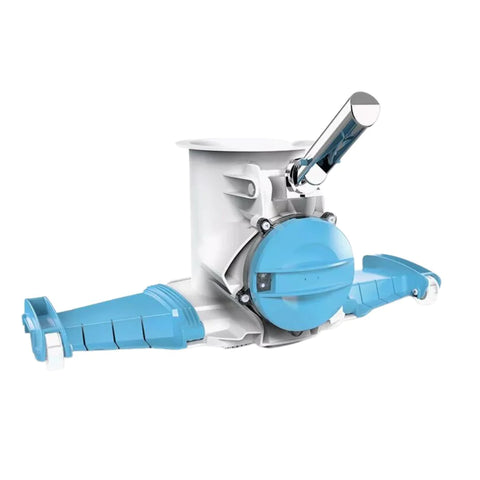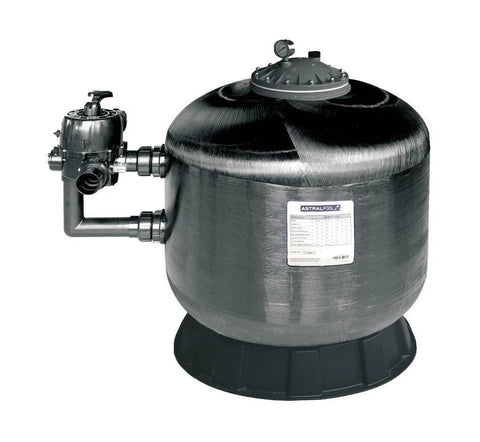How To Vacuum a Pool Properly

Have you ever finished vacuuming your pool and still ended up with debris all over the floor or murky water? It happens to a lot of people and it can be quite aggravating. Such a simple task shouldn’t be that complicated, right? In truth, it’s not. You just need the correct equipment and proper technique. And that’s what we’ll guide you through in this article, so take five minutes out of your day to learn how to vacuum your pool and you’ll never need to feel that frustration again.
Selecting the Correct Vacuum
This is the part where the majority of people make a mistake and never end up with a properly vacuumed pool. The thing is that most machines that do some type of vacuuming, in the sense that they suck in debris and push it out the other side, are often named and marketed as pool vacuum cleaners. So you’d expect them to, quite rightly, vacuum your pool.
However, this is one of those situations where being pedantic matters because pool vacuums and pool cleaners are not the same. Pool vacuums are pieces of equipment that connect to a telescopic pole which you use to manually vacuum the floor of your pool. There are two basic types:
- Ones that connect to your pool’s skimmer via a hose and use the filter suction to clean up debris.
- Battery-powered vacuums that connect debris in a filter bag. They are not connected to the skimmer and don’t depend on filter suction to operate.
A pool cleaner, on the other hand, is an automated piece of pool cleaning equipment that, yes, vacuums smaller particles from your pool and often also brushes the floor and sides. Pool cleaners come in three varieties:
- Suction cleaners - they utilise the suction created by the circulation system to move around and collect debris.
- Pressure-side cleaners - they utilise the pressure created by the pump to move around and collect debris.
- Robotic cleaners - these are machines with their own motors that run on electricity to move around your pool and collect debris.
So why is this distinction between vacuums and cleaners important? For one, because pool cleaners are not designed to vacuum larger pieces of debris. They are great for automatic maintenance where they vacuum smaller particles and potentially brush the floor and sides of your pool, but they can end up simply pushing around larger pieces.
Second, a pool vacuum allows you to the choice of collecting the debris and not have it enter your pool’s filtration system. This process is typically called floccing. For this, you need to set your filter so that it sends the water to sewage and not through the filtration system, and an automatic cleaner that slowly moves around your pool is not suitable for this type of job.
Further, many cartridge filters don’t even have the valve that will allow the water to go to sewage. So if your pool has a cartridge filter that will not allow you to send the water to sewage, you shouldn’t use the first type of vacuum that connects to the skimmer, but a battery-powered vacuum that has its own filter bag.
In short, pool cleaners are excellent for regular pool maintenance and can help keep your pool fresh and clean, but when it comes to vacuuming, the best pool vacuum is, well, an actual vacuum. And if your pool has a cartridge filter without the option to send water to sewage, you should use a battery-powered pool vacuum instead of a vacuum that connects to the skimmer.
With that out of the way, let’s explain how to vacuum your pool in 4 simple steps.
1. Prepping Your Pool
If there has been a storm or if your pool is in bad condition you may use flocculants and waiting for the debris to settle which can take 24-72 hours. Flocs bind smaller particles into larger clumps that settle at the bottom and are easy to vacuum or scoop out with a pool net. This makes the process more efficient as you will be able to collect the debris that would otherwise be floating and you couldn’t get it with a vacuum. Using floc is also a good solution if you have large algae problems.
2. Assembling the Vacuum
Once the debris has settled on the pool floor, take the time to assemble your vacuum. If you have a battery-power pool vacuum that doesn’t have a hose, that just means connecting the pole to the vacuum head and connecting the filter bag. If you have a vacuum that connects to the skimmer, you’ll need to connect the hose. A good tip here is to blow the air out of the hose before you connect it. You can do this quickly by holding the hose up to your jets.
3. Setting the Filter Settings

The next step is to set your filter valve settings. Typically, there are two: 1. filter and 2. waste. The ‘filter’ setting lets the water flow through the filtration system, while the ‘waste’ setting sends it down the drain. If you have used floc, you should set the valve to ‘waste’ before you start vacuuming. In case you’re using a vacuum with its own filter bag, you don’t need to worry. However, as we mentioned, most cartridge filters don’t have the ‘waste’ option, so a battery-powered vacuum is the best option.
4. Start Vacuuming
Once you have everything set up, it’s time to get to the vacuuming itself. The best tip here is to use slow, steady, and linear movements so you don’t stir up the dirt before sucking it up.
And that’s it - how to vacuum your pool in four easy steps!
Where Can You Get Everything You Need for Maintaining Your Pool?
Now you know how to vacuum your pool properly, but pool maintenance is more than the occasional vacuuming. To keep your pool pristine, you’ll also need other items at some point - and you can get it all at Direct Pool Supplies. From cartridge and sand filters to algaecide and pool sanitisers, simply order what you need online and we will deliver it to your address! On the hand, you can check if there’s a store near you and make the purchase in person. And if you need help with anything pool-related, check out our handy guides or feel free to contact us directly, we’ll gladly tell you what you wish to know.